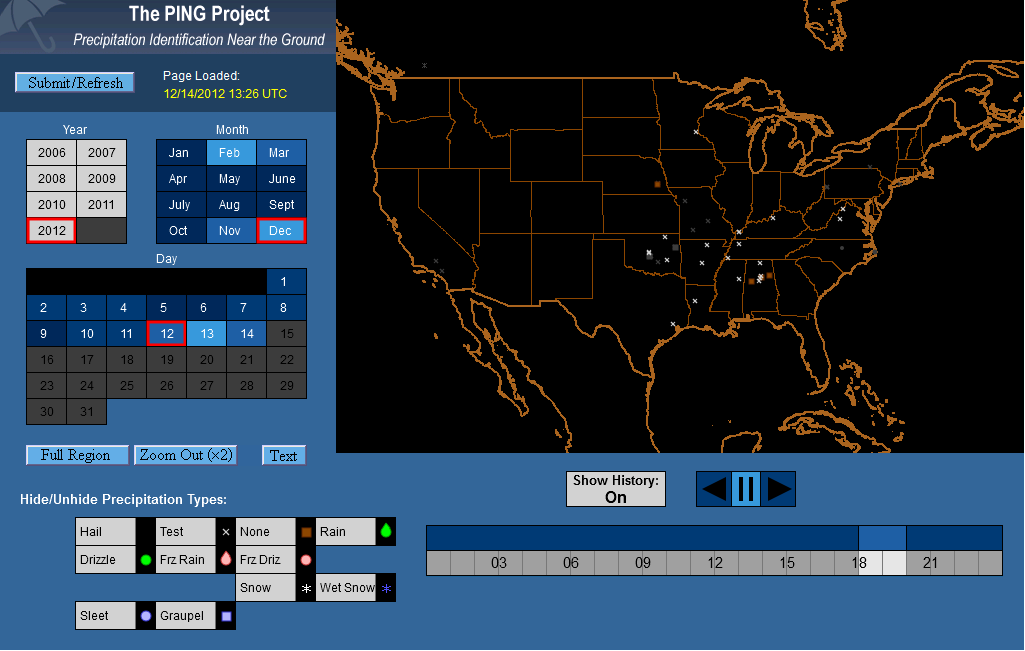Anyone who follows me on Twitter knows that if I am not tweeting about education and technology, then I am probably tweeting about two other things; weather and the Louisville Cardinals. This post focuses on a project by the National Severe Storms Laboratory that wants to help identify weather conditions on the ground. Because radar systems focus on conditions in the upper atmosphere, we often see radar with weather on top of us, but no precipitation falling. The goal of this project is to help with "nowcasting." The PING (Precipitation Identification Near the Ground) project uses an iPhone App or Android App to help report current conditions. If no access to an app is available, then weather reporting can also be done on the PING website.
"PING is looking for young, old, and in-between volunteers to make observations—teachers, classes and families too! We have collected over 45,000 observations since 2006, already making PING successful because of your help."This tool would be a great addition to science classrooms to report weather conditions for an experiment in a science classroom and have students log when they create a report and see conditions for different areas of your town. In a recent snowstorm in my area, a range of 30 miles had a difference between 1-6 inches. As reports go in, they appear on the PING Data Display Page. You can see a sample image below.
The PING website also provides a valuable lesson for learning about various types of precipitation that can occur during weather events. Remember that safety is a first priority and people should not put themselves in danger in order to report weather conditions, especially during severe weather. That should be left to trained and educated professionals.
In education we constantly talk about making it relevant, meaningful, and hands-on. The PING Project allows for an opportunity to do such reporting while also teaching students about honesty and weather.



No comments:
Post a Comment